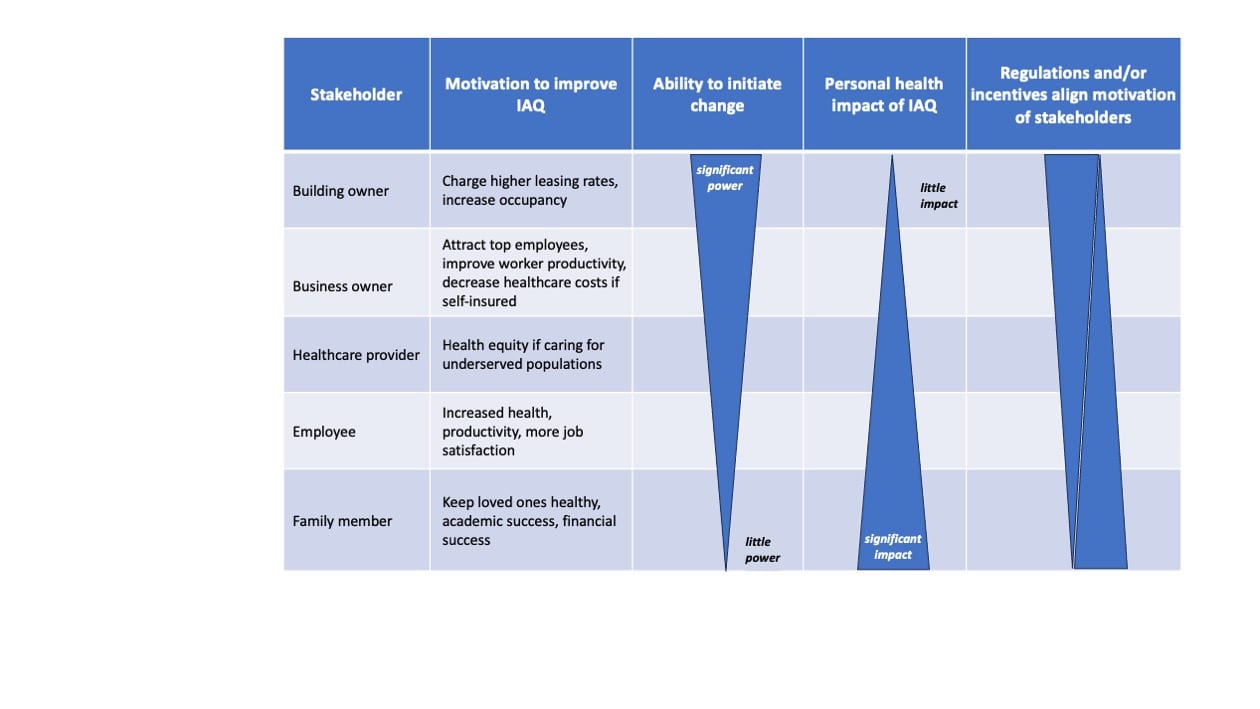
SCROLL
Incentives and obstacles in managing IAQ for occupant health
Will we take actions to protect the health of occupants, or will we fall back on a myriad of familiar excuses?
HEALTH IN BUILDINGS
When people became aware that transmission of SARS-CoV-2 was primarily through the air, reducing airborne exposure in buildings immediately became a high priority. As a result, high ventilation rates to reduce infectious airborne contaminants were implemented.
Almost simultaneous with recommendations for increased ventilation, extreme weather events tied to atmospheric warming from greenhouse gases catalyzed mandates to decrease carbon-based emissions from buildings. Building owners became caught in the difficult conundrum of managing IAQ to support occupant health while simultaneously conserving energy — all within a profitable business model.
Of these two goals, decreasing energy consumption has clear metrics (less fuel used) and obvious motivation (save money by paying for less fuel). Conversely, managing IAQ to support occupant health has complicated outcome metrics, short of the presence or absence of a clear “supers preading event.” In addition, the financial benefits of healthy occupants may not be seen by the building owner who is responsible for paying for building improvements.
Perhaps because of these disconnects, the adoption of health-based IAQ standards has lagged behind standards for energy conservation and decarbonization. Thankfully, building incentives and government and state regulations are now evolving to motivate off-site building owners to invest in systems to protect the health of day-to-day occupants. (see Figure 1).
For example, a groundbreaking change was announced at the Greenbuild 2023 Conference (GBC 2023) in Washington, D.C. For the first time in the 30-year history of the US Green Building Council (USGBC), managing indoor air for health was incentivized in the new version of the LEED rating system for existing buildings.

FIGURE 1: As standards and mandates evolve to require healthy indoor environments, the building owners who pay for capital costs will be more motivated to manage IAQ to protect occupants.
To overcome the difficulty in setting performance indicators for IAQ that supports health, the following needs to occur:
- Medical professionals must work with engineers and architects to benchmark safe IAQ thresholds.
- Comprehensive management of IAQ for health must be based on metrics that capture the effects of multiple pollutants, as well as the products of indoor chemical reactions.
- We must aim for safe provision of midrange relative humidity (40%–60%), to support IAQ for healthy occupants.
Unfortunately, it took a pandemic caused by an airborne virus to motivate us to take a closer look at the role of IAQ in disease transmission. On the bright side, we can now manage IAQ to support our physiology — including our immune, neuroendocrine, respiratory, and cardiovascular health. Will we take actions to protect the health of occupants, or will we fall back on a myriad of familiar excuses? I hope that building and medical professionals will work together to choose the correct path forward.
